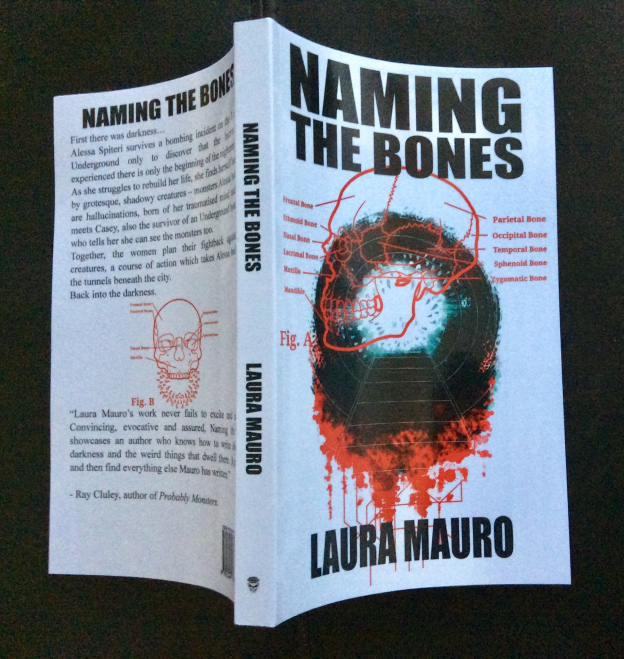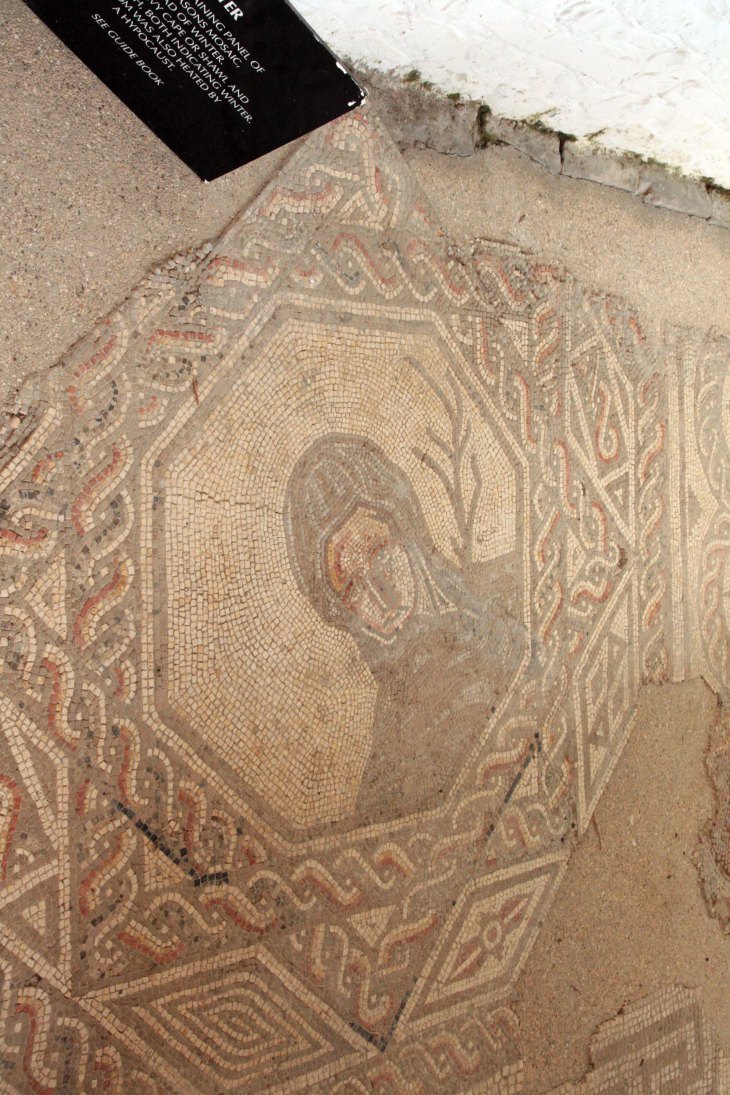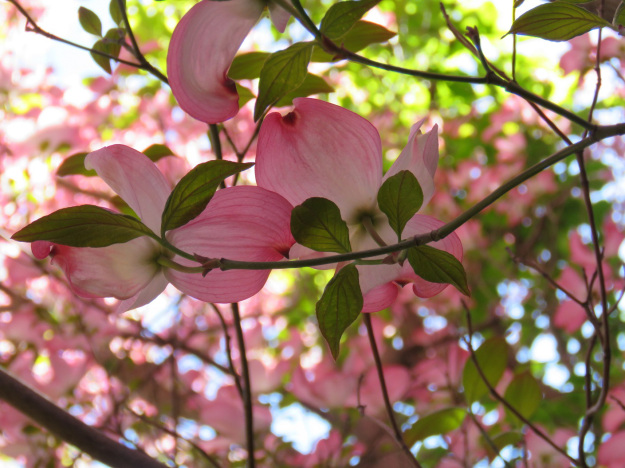 The cornus or dogwoods were simply amazing in Canberra last week. I have never seen anything quite like them. They do not flower like that here. These trees were a mass of bloom and you could clearly get them in shades of sugar pink to apple blossom pink and or simple white. Viewed close up, they were like stylised paintings in their simplicity. Lovely bark, too.
The cornus or dogwoods were simply amazing in Canberra last week. I have never seen anything quite like them. They do not flower like that here. These trees were a mass of bloom and you could clearly get them in shades of sugar pink to apple blossom pink and or simple white. Viewed close up, they were like stylised paintings in their simplicity. Lovely bark, too.
The blooming season is not long, I was told – measured more in days than weeks of peak bloom. But the sight is so glorious that I did not hear anybody complaining about the short season.
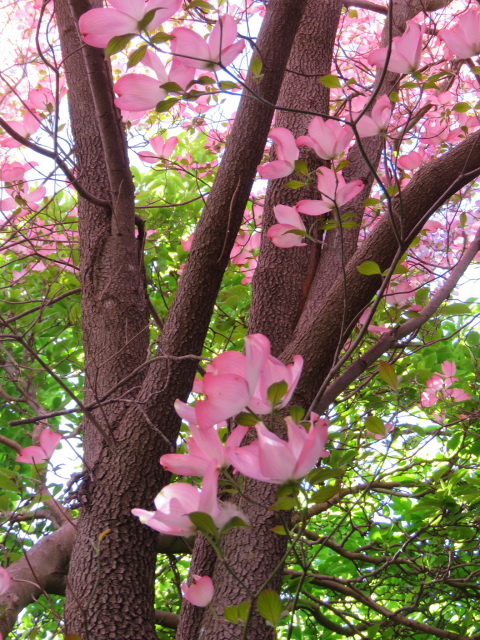 As far as I could make out, they were generally C. florida – or maybe some were hybrids in which case likely crossed with C. nuttallii in order to get bigger flowers. ‘Florida’ means full of flowers, not that it comes from the state of Florida. In fact, it hails from the more north eastern areas.
As far as I could make out, they were generally C. florida – or maybe some were hybrids in which case likely crossed with C. nuttallii in order to get bigger flowers. ‘Florida’ means full of flowers, not that it comes from the state of Florida. In fact, it hails from the more north eastern areas.
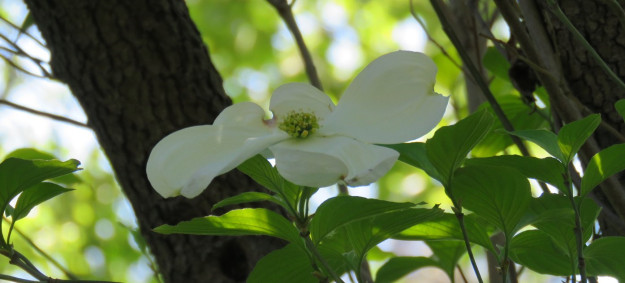
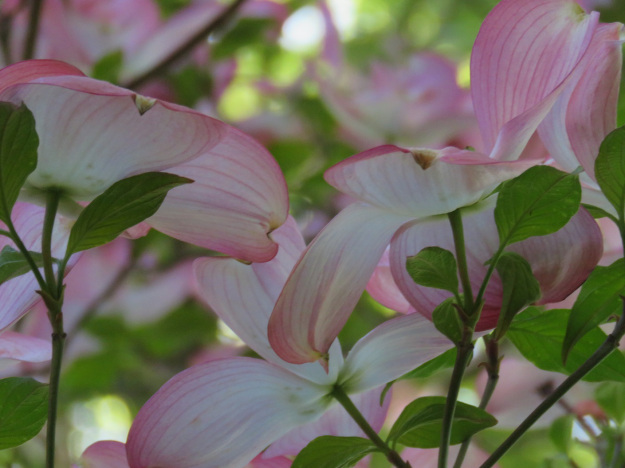 The cornus or dogwood family is quite large. There seems some debate over how many species, but probably in excess of 50. If you take a swathe across the temperate northern hemisphere areas from China, Korea and Japan over to North America, you take in most of the areas of natural habitat.
The cornus or dogwood family is quite large. There seems some debate over how many species, but probably in excess of 50. If you take a swathe across the temperate northern hemisphere areas from China, Korea and Japan over to North America, you take in most of the areas of natural habitat.
Why do we not see cornus looking magnificent here? Too wet. Too mild (lacking a winter chill and summer heat). Too windy. And our native puriri moth appears to wreak havoc on the cornus family. We can grow many things really well here. It is just that cornus is not amongst them.
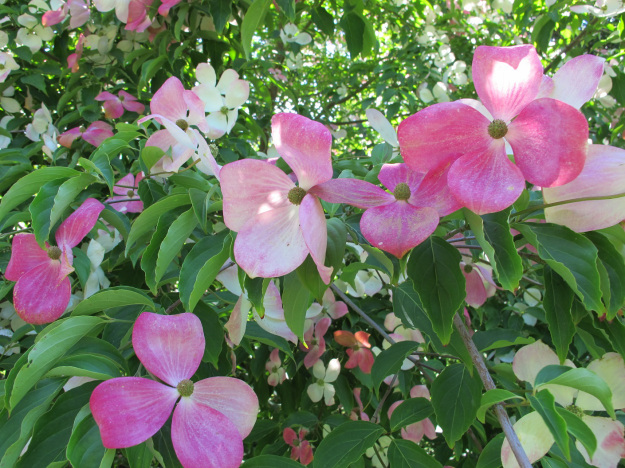
Cornus kousa flowering in June (so early summer) in England
Cornus kousa from China and Japan appears to be more adaptable than the American species. Our specimen finally succumbed to root rot – we literally pushed it over – but on our June visits to the UK, I have often photographed C. kousa in flower and there are a number of selections that have been named along with hybrids between it and C. florida.
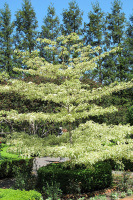
Cornus controversa variegata
It was another cornus – C. controversa or the layered ‘wedding cake tree’ which became a fashion plant in this country in the 1990s. It is likely we can attribute this popularity to one person. The wonderful Irish gardener, Helen Dillon did a lecture tour through the country around that time showing slides of her garden (I am pretty sure we are pre-dating power point here) and she had a terrific specimen of Cornus controversa variegata. Everybody wanted one and even we produced some plants commercially though we never planted one out here. The trouble is that it needs to be in the open and full sun in order to develop the characteristic tiered growth habit but with a white variegation, it can often look a little burned and crispy in our bright, unfiltered sunlight. The light is much softer in southern Ireland.
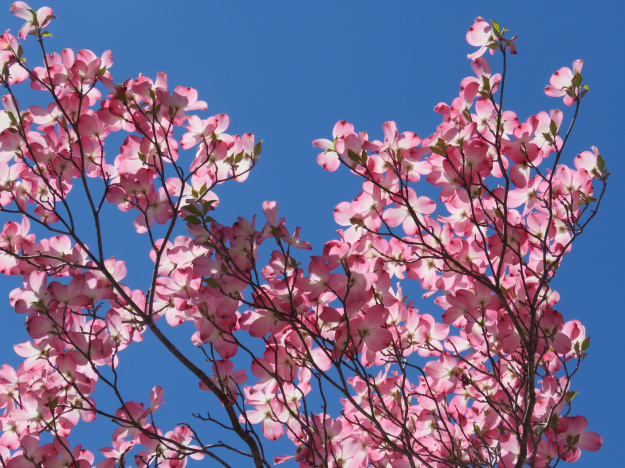
- More


